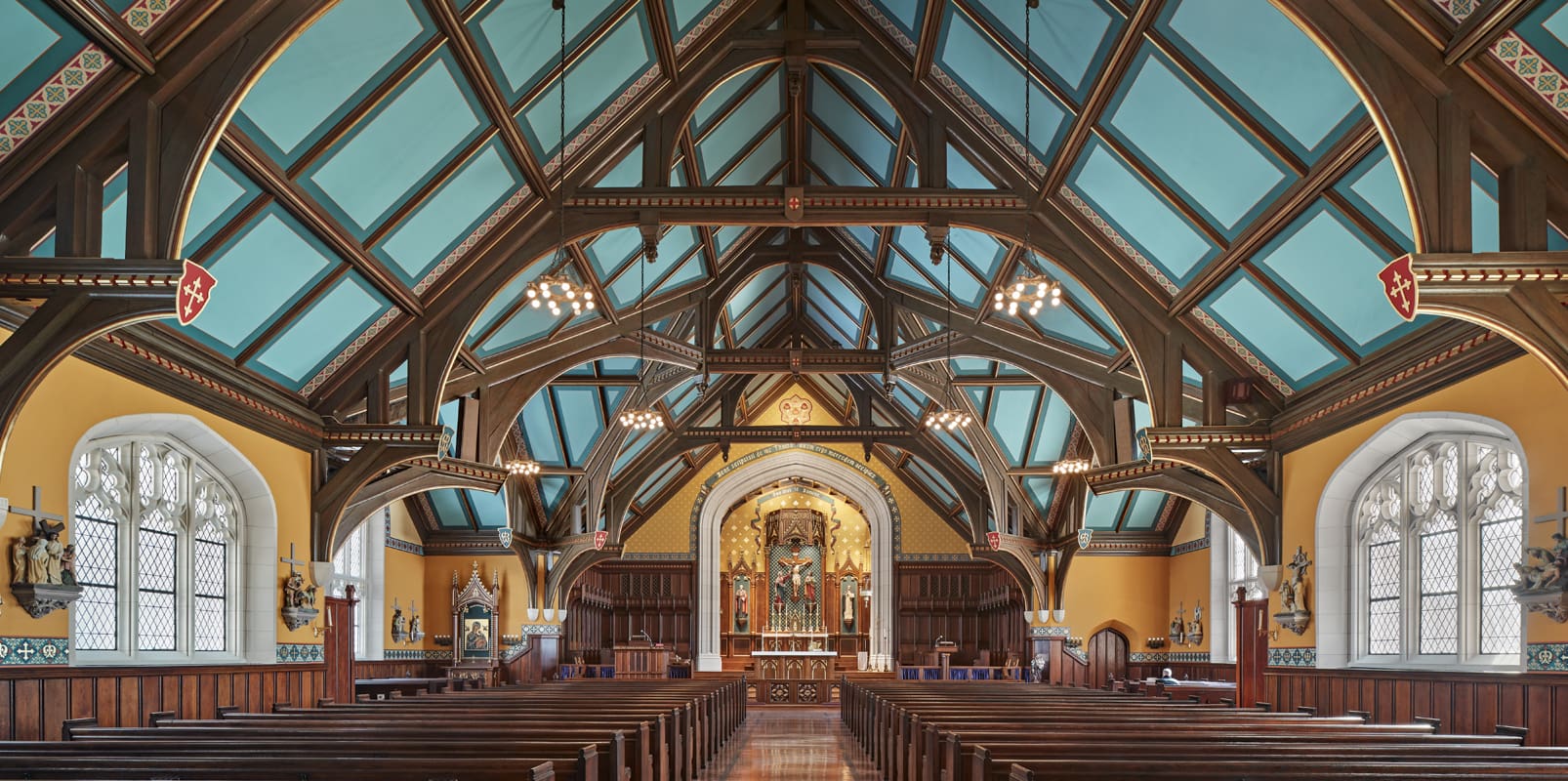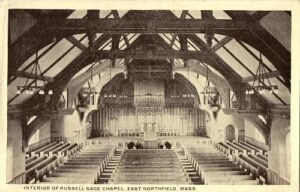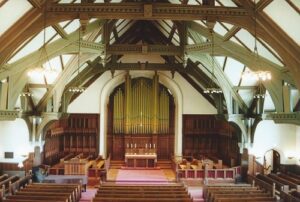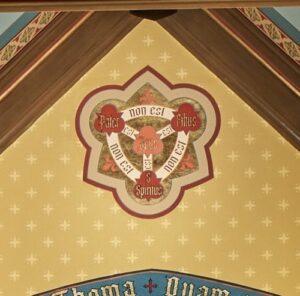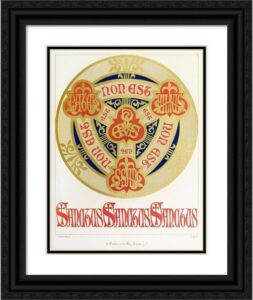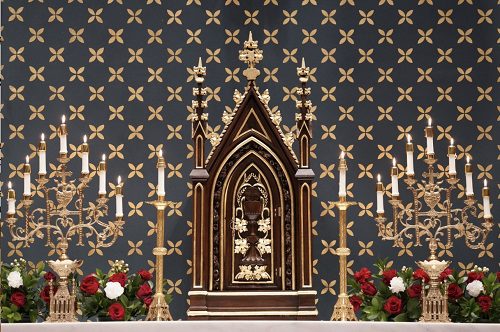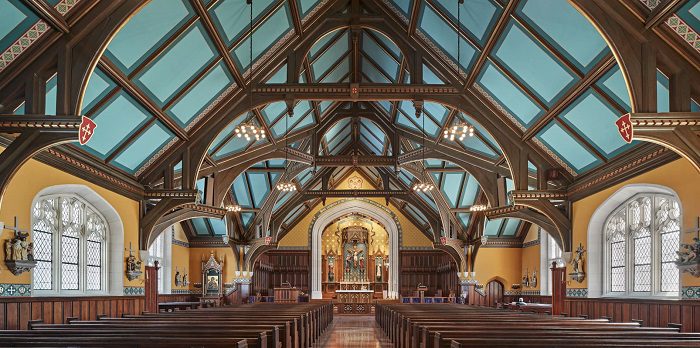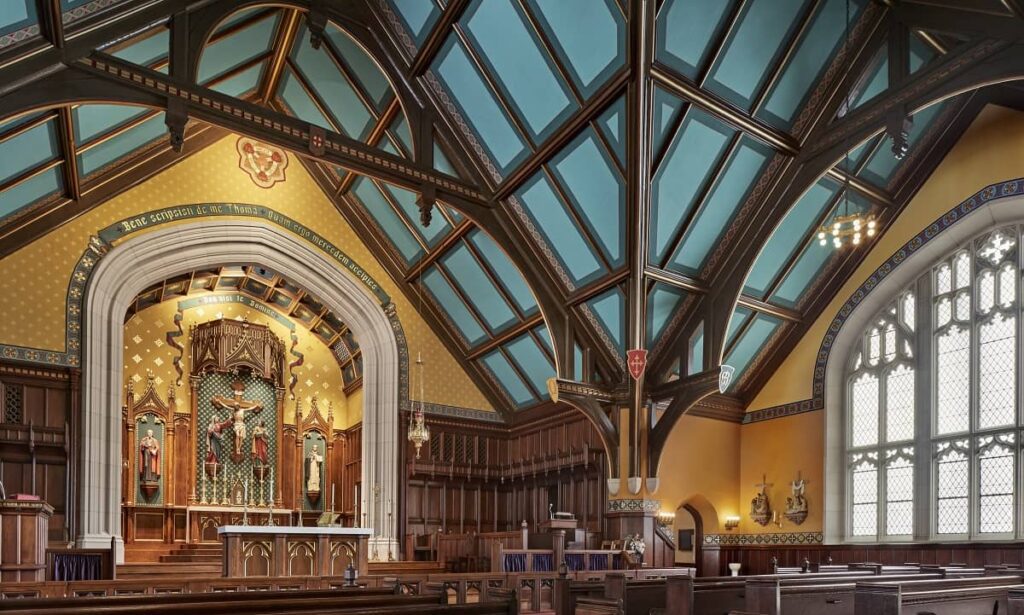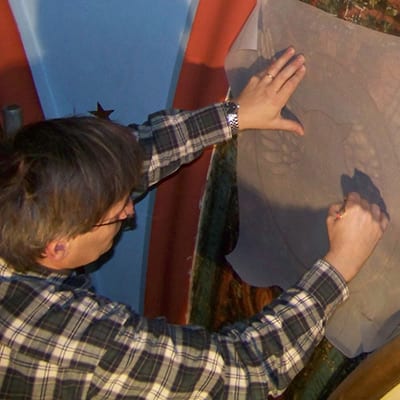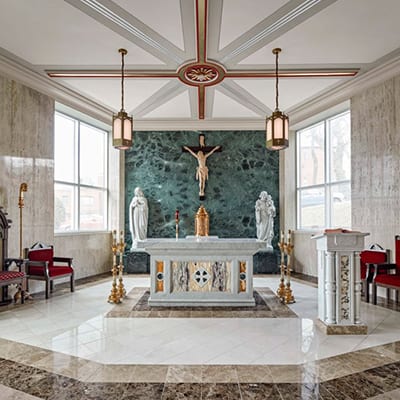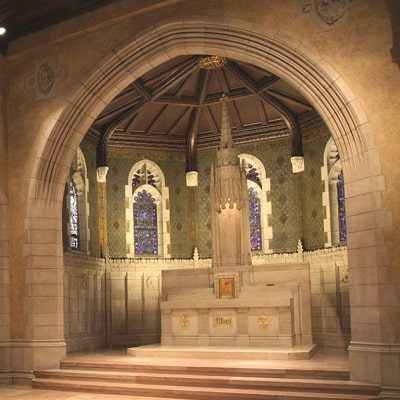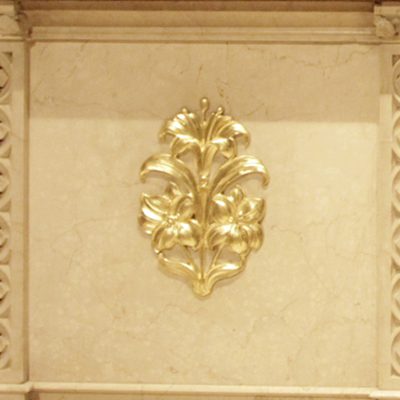The chapel at Thomas Aquinas College’s East Coast Campus was constructed in 1909 and named for its benefactress, Margaret Olivia Sage. The Sage Chapel was designed by the architectural firm Shepley, Rutan and Coolidge for the Northfield School for Girls, a prestigious, protestant all-girls school in Massachusetts. When Thomas Aquinas College acquired the Northfield School property in 2019, one of the essential tasks of the College was to transform this protestant chapel into one of unapologetic Catholicism. Canning Liturgical Arts and Harrison Design were brought onboard to realize these beautification goals.
(Left) Postcard Circa 1910. (Right) Interior Circa 2020.
It was imperative that the beautification remain in keeping with the elegant Carpenter Gothic style and stone exterior while articulating the teachings and traditions of the Catholic Faith. The now Catholic chapel is named and dedicated to Our Mother of Perpetual Help. This decision played an important role in Canning’s design process, affecting both the color palette and symbolism used in the stencil decoration. The early design process consisted in numerous watercolor renderings completed in the Canning Studio as a means to communicate potential ideas for the future interior. Once a scheme was selected, studio and site production commenced to actualize the design.
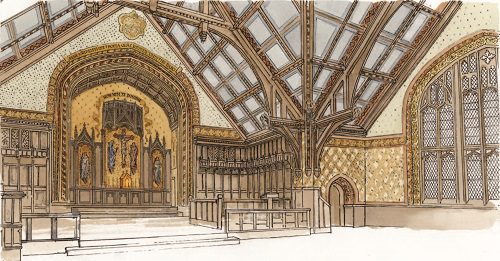
Canning Watercolor Rendering
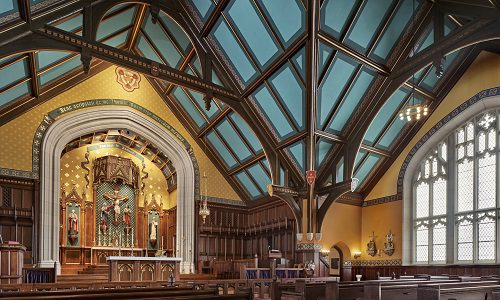
Thomas Aquinas Chapel After Transformation

Icon Of Our Mother Of Perpetual Help In New Shrine
Canning utilized colors of the new sacred icon of the building’s patroness in the design process. The College had commissioned the Our Mother of Perpetual Help icon by an iconographer, who is a cloistered nun from the Sisters of Bethlehem in Livingston, New York to replace the digital rendition which was a placeholder for the icon who the Catholic chapel is named and dedicated to. The icon is primarily hues of gold, blue, green and red. The gold background of the icon is understood to represent heaven and the divine light of the Resurrection. Both the Christ Child and the Blessed Mother are garbed in the colors of royalty to convey their heavenly divinity. The combination of green, symbolizing creation and Christ’s humanity; red, symbolizing the Crucifixion; and gold, again symbolic of the Resurrection, reference the Incarnation, Death and Resurrection of Christ. Meanwhile, Mary’s tunic of red historically represents the color worn by virgins at the time of Christ and her blue cloak represents motherhood according to Palestinian tradition, in order to convey Mary as both virgin and mother.
Canning expanded upon the color symbolism of this icon by introducing the same palette to the interior of the chapel. The walls throughout are painted in golden hues while the ceiling is veiled in the protective, blue cloak of the Blessed Mother. The color palette is carried throughout the nave in a simplified version from the sanctuary in order to retain the hierarchy of the room.
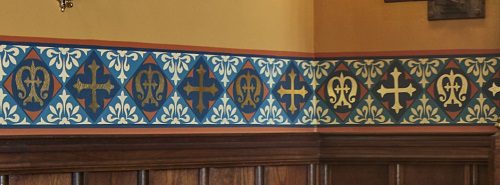
Detail Of Wainscot Stencil Decoration
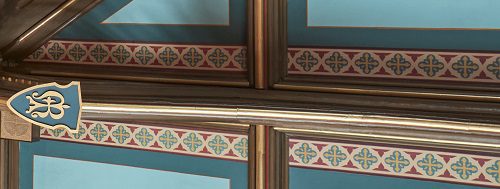
Detail Of Ceiling Truss Stencil
The stencil patterns feature complementary color palettes with Mary’s monogram and crosses as a continued reference to the relationship between the Holy mother and child pair. The stencil decoration at the wainscot and ceiling trusses were painted on canvas in the Canning studio and later installed onsite. This approach allows for an efficient and consistent completion of the stencils as well as saves time on the job-site.

Studio Production
Subtle elevated details together with the impressive reredos by Harrison Design, set the sanctuary apart from the rest of the interior. In the sanctuary, the sienna wall color is embellished with a repeat pattern, known as a diaper pattern, overlaid in monochrome with a matt finish. In the apse, the same diaper pattern technique is utilized but here the motif is more ornate and gilded to impress upon the viewer with the greater importance of the sanctuary. The reredos and tabernacle also feature gilded highlights to articulate the carved details in the woodwork. The ceiling of the apse recalls the star on Mary’s veil in the icon reminding the faithful that she is the guiding star to Christ.
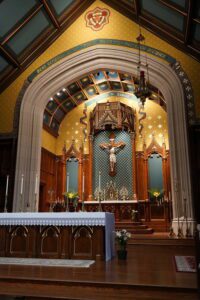
Sanctuary Arch
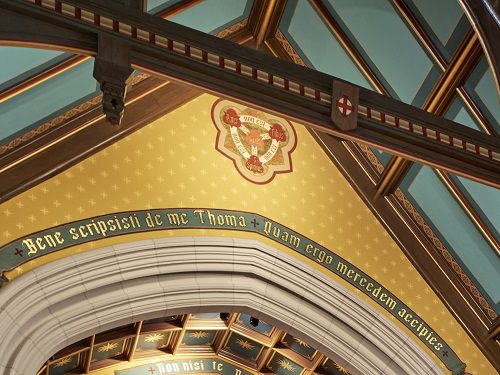
Sanctuary Arch Detail Close-up
As a nod to the namesake of the college, above the sanctuary arch is a segment of the dialogue between God and St. Thomas Aquinas. The phrase in Latin over the arch reads, (Bene scripsisti de me Thoma Quam ergo mercedem accipies) “You have written well of me, Thomas. What reward will you receive from me for your labor?” The response is found in the sanctuary above the high altar, “Lord, nothing except you.” The quotations are taken from a prayerful dialogue between Christ and Aquinas. The stencil decoration over the arch, lettering and diaper patterns were completed onsite. The arch itself is treated with a faux limestone finish to match the true limestone at the chapel windows. Utilizing special mixed paints, the mortar joints are drawn in with the stones to fool the eye.
(Left) Trinity Symbol At Our Mother Of Perpetual Help ( Right) Augustus Pugin Trinity Symbol
Above the sanctuary arch is an ancient symbol conveying the mystery of the Trinity. In Latin, the symbol communicates that “Father is not the Son, the Son is not the Spirit, the Spirit is not the Father. However, Father, Son and Spirit are one God.” Essentially that there are three inseparable persons in one God. Variations of this symbol may be found in many Catholic and Protestant Churches throughout the Gothic revival period. The design is inspired by the nineteenth-century English architect and theorist Augustus Welby Northmore Pugin (1812-1852), who makes note of the design in his book, Pugin’s Glossary of Ecclesiastical Ornament and Costume (1844). Intended as a sourcebook for artists and craftsmen, the Glossary included color plates for the express purpose of imitation by hand. As Pugin’s introduction states “That Art has its fixed principles, any departure from which leads to inconsistency and unmeaning effect, is a truth never to be lost sight of. And if all Art is subject to fixed laws, which define her province and inform her purpose; least of all is Christian Art to be regarded as exempt from rule, not merely of ecclesiastical precedent, but of philosophical and scientific principle.”
Tabernacle Gilded And Diaper Pattern Details
Beautifying a church is noble, for churches are meant to edify the people through their architectural beauty and decoration. From the watercolor design process to the completed project, the work at Our Mother of Perpetual Help Chapel demanded the utmost quality of the trade and careful attention to the symbolic details. The project required Canning to utilize a multitude of traditional decorative painting methods and immense research in order to deliver an interior worthy of the Divine.
Thomas Aquinas Chapel After Transformation

